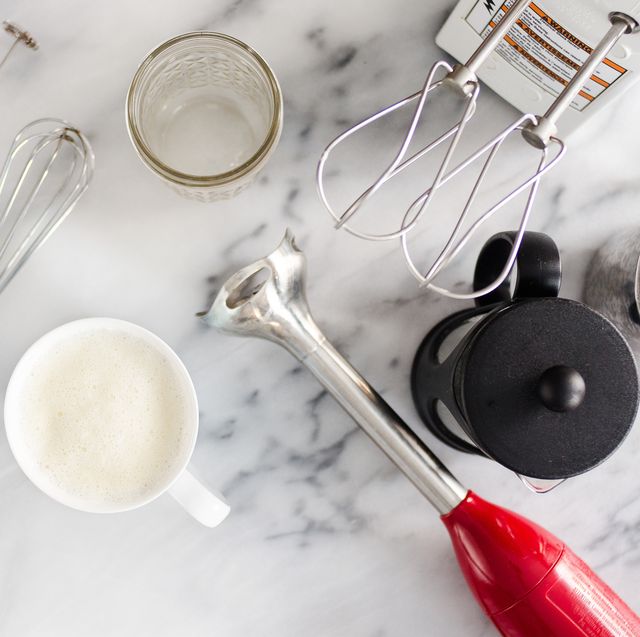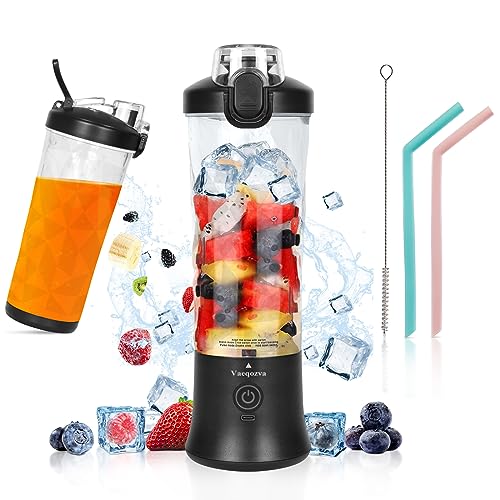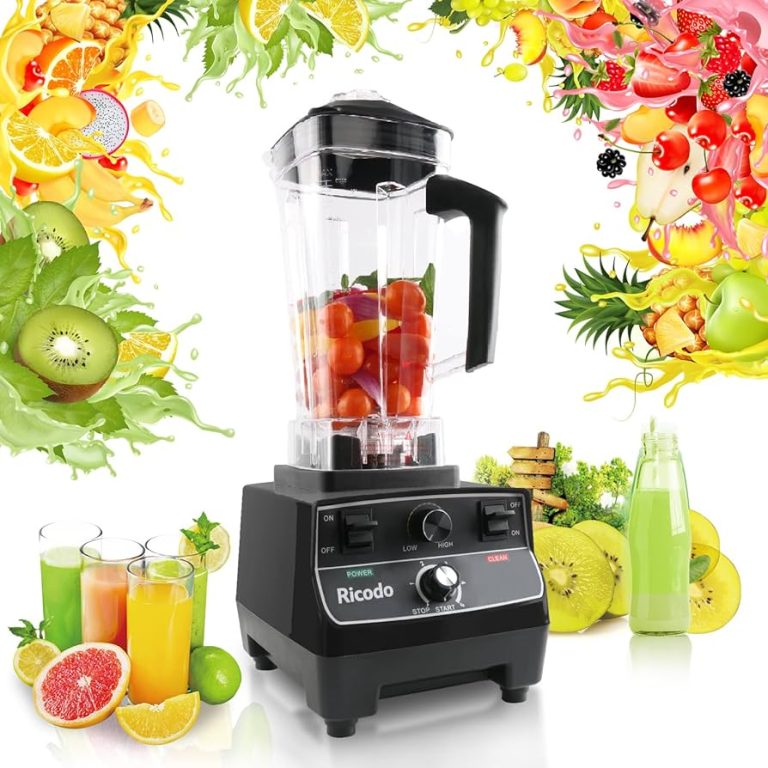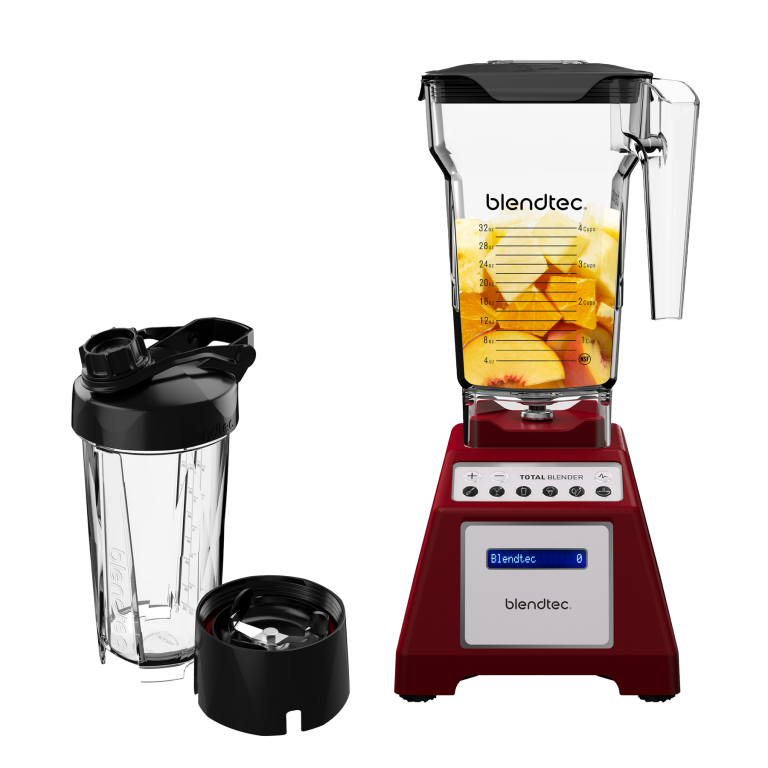How To Tell If Your Blender is Broken: Quick Diagnosis!
Determine if your blender is broken by checking for unusual noises, failure to start, or inconsistent blending. If the motor smells like it’s burning or the controls do not respond, your blender likely needs repair or replacement.
Blenders are an essential kitchen tool for smoothie enthusiasts and culinary artists alike. A malfunctioning blender can interrupt your meal prep routine and leave you frustrated. Recognizing the signs of a faulty blender is crucial for quick troubleshooting. Signs range from subtle to obvious, and identifying them promptly can save you time and money.
Common issues include lack of power, irregular motor sounds, and ineffective blade movement. Keeping your blender in optimal condition ensures your smoothies stay silky and your sauces perfectly pureed. Ensuring your appliance works efficiently is not just about convenience but also about safety, as a broken blender can pose various risks. Regular maintenance and early recognition of potential problems can keep your blender blending for years to come.

Credit: www.amazon.com
Signs Your Blender Might Be Failing
Blenders are essential kitchen tools. But sometimes, they start to show signs of wear and tear. Knowing these signs can save time and prevent kitchen mishaps. These are the tell-tale symptoms of a failing blender.
Unusual Noises During Operation
Blenders should run smoothly. Loud or strange noises are not normal. These sounds suggest internal issues. Look out for:
- Rattling: Loose parts or broken blades might be the cause.
- Grinding: The motor’s bearings could be wearing out.
- Squealing: This could indicate a belt problem in blenders with a drive belt.
If any of these noises occur, inspect your blender. You may need to replace parts or get a new machine.
Difficulty Starting Or Inconsistent Speeds
A reliable blender should start without a hitch. If yours doesn’t, it’s a red flag. Same with speed control.
Watch for these issues:
- Power problems: If it won’t start, check the power source first.
- Button failures: Sticky or non-responsive buttons can be due to spills or wear and tear.
- Speed surges: They point to a failing motor or control mechanism.
Consistent speeds ensure smooth blending. If your blender can’t maintain speeds, consider repair or replacement.
Common Mechanical Failures
Blenders are essential in any modern kitchen. But like any appliance, they can break down. Knowing the signs of mechanical failures helps you decide between repair or replacement.
Worn-out Blades And Seals
Smoothies rely on sharp blades. Over time, blades can dull, and food pieces may not blend smoothly. Listen for strange noises or check the blade’s serration. If you find uneven edges, it’s time for a replacement. Seals can also wear out, leading to leaks. Consistently finding liquid under your blender? Your seal might be the culprit. Replace worn seals promptly to avoid motor damage.
Motor Burnout: Identifying The Symptoms
The motor is the heart of your blender. Signs of motor burnout include:
- Smoke or a burning smell during use.
- Unusual noise or vibration.
- Inability to turn on, or automatic shutting off.
If you notice any of these symptoms, unplug your blender immediately. Consult your manual or a professional to assess motor damage.
Electrical Issues To Watch Out For
Blenders are essential kitchen tools, but like any appliance, they can break. Electrical issues are common problems. Knowing these signs can save time and reduce risks. Let’s delve into specific electrical problems to be aware of.
Power Cord Damages
Power cords can suffer from wear and tear. Look for these signs:
- Frayed wiring can be a fire hazard.
- Exposed inner wires are dangerous and need immediate attention.
- Bent prongs on the plug can prevent proper electrical contact.
Replace the power cord if you notice these signs. It ensures safety and proper functionality.
Faulty Switches And Blown Fuses
Faulty switches and blown fuses interrupt blender operations. Watch out for these:
| Switch Issue | Symptoms |
|---|---|
| Sticky or unresponsive | Blender fails to start or change speeds. |
| Loose connections | Intermittent power or unexpected stopping. |
Check the fuse if switches seem fine. A blown fuse will cut power entirely. Look in the manual to locate and assess the fuse.
Performance Red Flags
If your daily smoothie routine hits a snag, your blender might be sending out distress signals. It’s crucial to notice these warning signs before it’s too late. Here are the key performance red flags to help diagnose a failing blender.
Inconsistent Blending Results
Choppy smoothies or unblended chunks point to trouble. A fully functioning blender should deliver a smooth, even texture. If the outcome varies each time, something’s off. Check for:
- Dull blades: They can’t slice as needed.
- Motor fatigue: It might struggle to maintain speed.
- Seal issues: Leaks can cause imbalance and poor results.
Excessive Vibration Or Movement
A blender that dances across the counter is a red flag. Stability is key for safe operation. Excessive shaking suggests a few possible issues:
| Problem | Possible Cause |
|---|---|
| Base Movement | Uneven feet or a wobbly surface. |
| Vibration During Use | Unbalanced blades or a loose motor. |
| Loud Noises | Worn-out bearings or gear issues. |
Take immediate action to secure your blender and investigate these concerns for a quick fix or potential replacement.
Troubleshooting Tips
Experiencing trouble with your blender can be a real smoothie-stopper. Before you panic, dive into some
troubleshooting tips to determine whether your blender needs simple home checks, or if it’s time to seek professional repair.
Simple Home Checks
Identify common issues with these steps:
- Check the power – Ensure the blender is plugged in and the outlet is working.
- Inspect the base – Look for any loose or damaged parts.
- Examine the blade – Make sure it’s properly attached and not dull or stuck.
- Test the settings – Try different speeds to see if the motor responds.
These checks can often reveal simple issues you can fix at home without extra help.
When To Seek Professional Repair
Some signs that indicate the need for professional help:
| Sign | Meaning |
|---|---|
| Burning smell | Potential motor or electrical issue |
| Leaking base | Seal or gasket may need replacement |
| Unresponsive controls | Possibly a wiring or circuit problem |
| Loud noises or vibrations | Could be a damaged motor or assembly |
Reach out to a specialist if these issues persist after home checks.

Credit: www.walmart.com
Maintenance Best Practices
Proper maintenance extends your blender’s life and ensures it works like new. Follow these best practices for a functional blender.
Cleaning For Longevity
Keeping a blender clean is key to its performance.
- Disconnect the blender before cleaning.
- Remove detachable parts and wash with warm, soapy water.
- For stubborn residue, blend water with a drop of dish soap, then rinse.
- Dry all parts thoroughly before reassembling.
Never immerse the motor base in water.
Regular Inspections And Part Replacements
Blenders need routine check-ups to catch issues early.
- Check seals and gaskets monthly for wear and tear.
- Examine blades for sharpness and damage; replace if needed.
- Listen for unusual noises which could indicate motor problems.
- Ensure the base and control buttons are clear of debris.
A preventative approach keeps blenders blending smoothly.

Credit: www.amazon.com
Frequently Asked Questions Of How To Tell If Your Blender Is Broken
What Are Common Signs Of Blender Failure?
Blenders often show clear signs when they’re failing. These signs include unusual noises, failure to start, a burning smell, or smoke. If your blender exhibits any of these warnings, it might be time to troubleshoot further or consider a replacement.
How To Troubleshoot A Non-starting Blender?
First, check if the blender is plugged in and the outlet works. Next, ensure the blender’s base and container are correctly aligned and locked in place. Overheating can also cause a temporary non-start; let it cool down for a bit and then try again.
Can Leaking Indicate A Broken Blender?
Yes, leaking from the bottom can indicate a broken seal or a crack in the jar. Check for worn out gaskets or any visible cracks. If you find damage, replacing the affected parts might solve the issue. Continuous leaking, however, could mean it’s time for a new blender.
What Does A Burning Smell From A Blender Signify?
A burning smell typically signifies that the motor is overheating or is overworking due to dull blades or a full jar. Give it a rest and try blending smaller amounts. Persistent burning smells, however, could indicate a more serious motor issue that might require professional attention.
Conclusion
Determining the health of your blender isn’t complex. Listen for odd noises, check for leaks, and observe any performance issues. Regular maintenance extends its lifespan. If the signs are clear, repair or replace it to keep your kitchen running smoothly.
Remember, a well-functioning blender is key for perfect blends every time.






